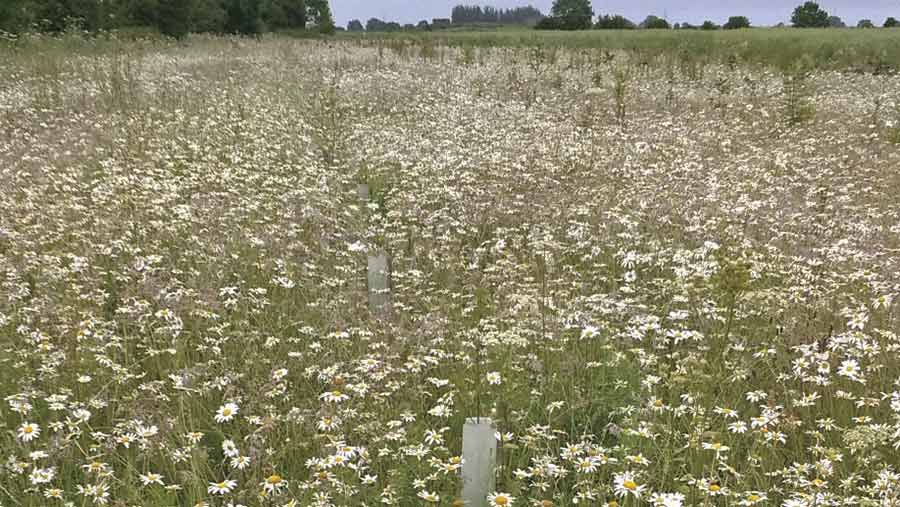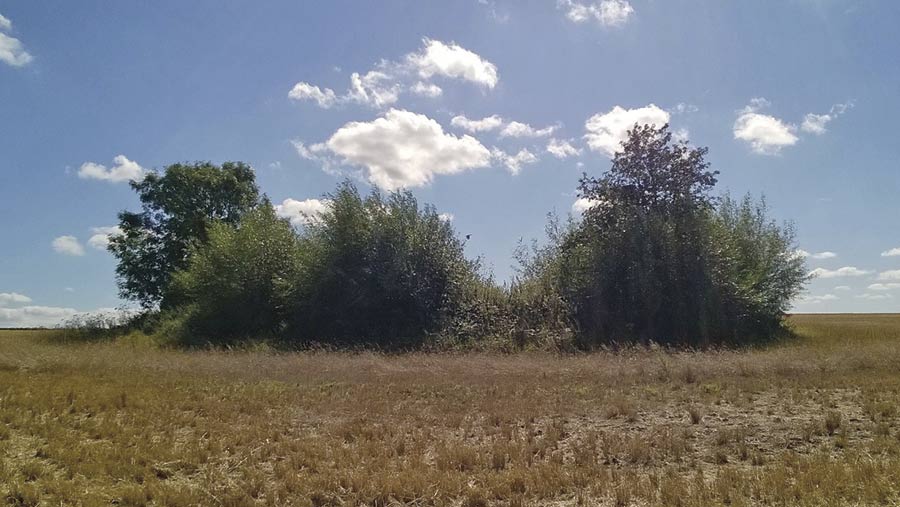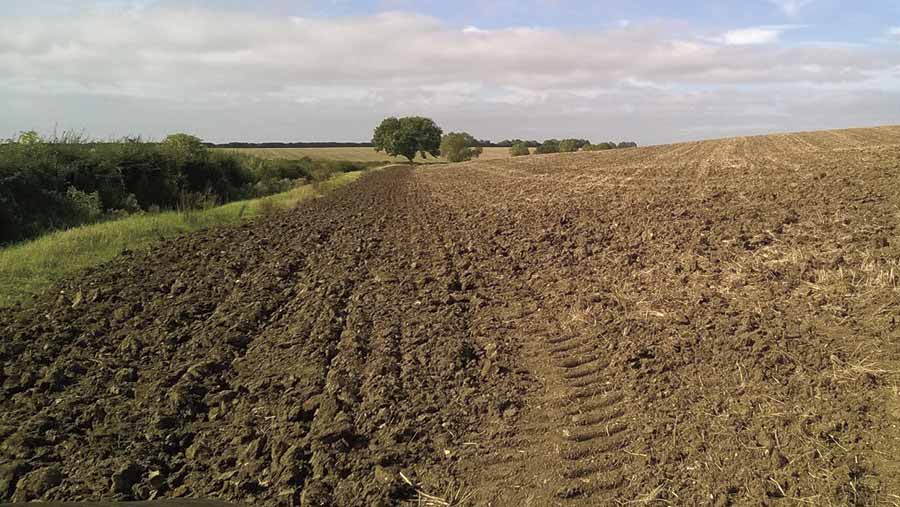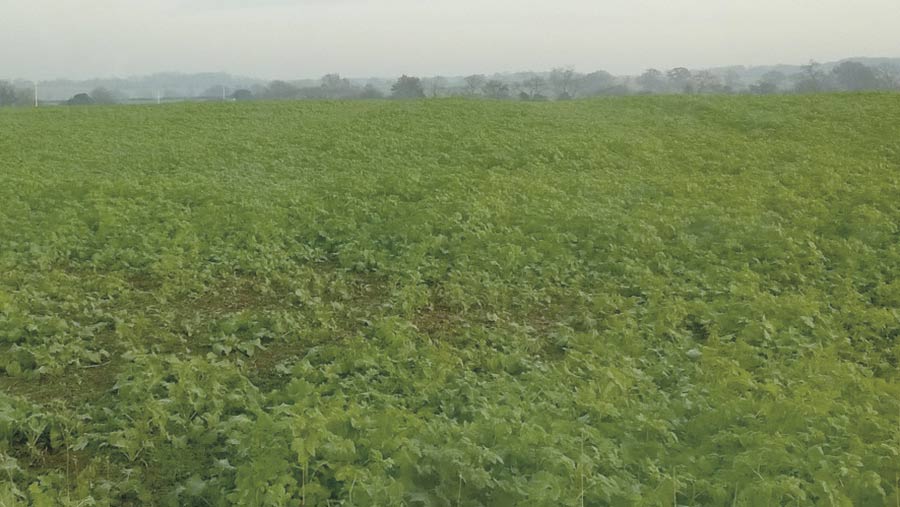What the new Countryside Stewardship Scheme can offer farms
 Nectar flower mix © Ed Barker
Nectar flower mix © Ed Barker The new round of the Countryside Stewardship Scheme (CSS) has just opened in England and offers excellent opportunities for farming businesses to diversify their income and maximise the efficiency of their land use, says Edward Barker of land agent Cheffins.
While the new CSS scheme involves more work than its predecessor schemes, it can be tailored to what a farm does or doesn’t want to do – you can do as much or as little as you choose.
At the same time, it offers generous grants towards water capital items that farming businesses may have been planning on investing in anyway.
See also: Applications open Countryside Stewardship 2017
By going into a mid-tier or higher-tier scheme starting 1 January 2018, you are guaranteed an income from CSS until 2023, by which time it is more than likely we will have left the European Union.
This year’s scheme is similar to those of the previous two rounds. There is a mid-tier scheme, open to all farmers, and a higher tier available to a smaller number of farms in areas of particular environmental interest to Natural England (NE).
What’s different this time?
Many were surprised at the low rate of applications for CSS in 2015 and 2016. In 2015, the rollout occurred very late, and publicity about the scheme last year was still pretty low.
There were some negative headlines about the application process, payment dates and understanding the rules of various options.
Natural England is learning from these errors and challenges, and irrespective of some of the teething problems, the opportunities to farming business within the scheme outweigh the negative points.

© Ed Barker
This year the guidance is better, the mid-tier has online calculators to help applicants work out the best options and there is a model farm example to show how to make grant applications.
Much of the scheme will be the same as in previous years. For example, the options, payment rates and the fact that not every application can be guaranteed.
This year, the application system is less paper-heavy, including a simplified approach for providing any additional evidence for certain options.
What are the main or best opportunities in the 2017 round?
CSS provides an excellent opportunity to be paid for capital or environmental options, while allowing you to keep the most productive parts of your farm in farming use.
The best thing about the scheme is that it is “part farm” and not “whole farm”. This means that you can place as many or as few fields into your scheme as you like, so a 500ha farm could enter just one field and that would be its whole scheme.
This works very well for farms that can identify the least productive areas of land, and then look at the options available which may suit best the farming approach.
Many farmers are already carrying out many CSS options such as low-input grassland, low-input cereals, 4-6m buffer strips or over wintered stubble.
This may be because of expired ELS agreements or simply because it works out as the most efficient farming approach. Either way, if you are doing it, you may as well get paid for it.
As with 2016, many of the options pay well, and are certainly worth consideration. They range across a number of different land uses such as pollen and nectar mixes, or grassland options, historic, boundary and landscape features.
For example, the winter bird food option pays £641/ha while a legume rich sward option pays £309/ha.
Across the board, the payment rates can be high, averaging around £500/ha for arable options and £300/ha for grassland options.
What’s the process and deadline for a) higher level b) mid-tier applications?
Anyone can submit an initial application – formerly called an Expression of Interest or EoI – to NE if they feel they should be considered for higher tier.
Higher-tier application forms must to be requested from NE by 13 April. These are fairly straightforward, providing an outline of whether or not you may be eligible for higher tier.
Initial applications for higher tier must be submitted by 5 May but if this is refused, you can apply for mid-tier. If a higher tier initial application is accepted then the full application must be submitted by the end of September but you will get one-to-one help with completing this from NE.

© Ed Barker
Mid-tier applications do not involve an initial application and must be submitted by the end of the year. An application pack must be requested from NE and will be sent by post or by email.
The benefit of completing forms electronically is that your options are automatically calculated, and it will give you an estimated income figure for your farm.
Depending on the options you choose you will have to complete a Farm Environment Record (FER), but only for the fields you are putting options in, and maps showing where you want to put your options.
Like ELS, for mid-tier you complete a simple application form and an annex detailing where you want to place non-rotational options and how many rotational options you want.
NE will also send to you a Historic Environment Farm Environmental Record (HEFER) which details any Scheduled Ancient Monuments (SAMs) and Historic England will provide guidance on suitable options for these fields. These are the only items that must be part of any scheme.
How do I assess whether to apply for CSS?
CSS is not for every farming business. Some popular options such as ditch management and field corner management have not been carried over from ELS.
In addition, the every-two-year rule on hedgecutting is a minimum standard of being in the scheme and no payment for this is made; the same goes for completing an FER.
CSS 2017
- Guarantees income until 2023
- Competitive scheme but well funded
- Many farms are already carrying out some of the options
- Many options pay better than conventional farming on marginal land
- Good grants towards water capital items that can improve the farm’s environmental credentials
- To ensure your application has the best chance of success, target your local priorities
- Applications require detail and can be fiddly, with photographic evidence sometimes needed, but well worth the effort
Some of the standalone grassland options do not pay as much as had been hoped, and generally work better when included with additional items such as the lenient grazing or haymaking supplements.
Lenient grazing, for example, pays an extra £44/ha supplement on top of the grassland option in exchange for restricting grazing on certain land. The haymaking supplement pays an extra £85/ha in upland areas.
The best way to approach a scheme is to take a fresh view of your land, thinking about not only how productive it is, but also the efficiency of its use.
There are parts of a farm that will often be difficult to cultivate or graze, and in many cases the returns from some of the CSS options are far higher on a per hectare basis than any income from farming.
This not only provides a steady income for that area of land for five years, but also minimises machinery and labour on those marginal areas.
Look at all the available options and see which would like to use, or which would be easiest to establish on your land.
How will applications be treated – what are the priorities and how can I ensure the best chance of success?
When applications are submitted they are given a score by NE. This is based on several factors, in general looking at what kind of options you have and if they are meeting any local priorities.
Measures that try and meet these priorities will score more highly.
In lowland arable areas, many priorities focus on protecting watercourses or encouraging pollinators or birds, whereas in upland areas many are centred on protecting grassland, landscape features or options related to livestock management.

© Ed Barker
If you have a scheduled ancient monument, then putting options in place that help protect it will also score highly.
A key part of the scheme is the Wild Pollinator and Farm Wildlife Package (WPFWP) – a collection of measures that include options such as pollen, nectar and wild bird seed mixes. There are three packages within this tailored towards grassland, mixed and arable farms.
To meet this specification in the mid-tier scheme, for example, you have to choose options that help provide winter bird food and nectar and pollen sources for 3% of the land in the agreement. By going into this package, your score will be increased.
One thing that is definitely worth checking is whether you are in a high-priority water quality area. If so, further weighting is also given to your score by having options endorsed by a Catchment Sensitive Farming Officer (CSFO).
It also means that some capital items are available, such as help towards the cost of biobed filters or concrete yard renewal.
NE is flexible over applications, in that it will generally not reject outright but will work with applicants to adjust applications to help meet the requirements.
The two previous rounds of CSS have not had a large number of applicants and so the remaining funding from these is still available for schemes starting in 2018, increasing the chances of a successful application.
When will I be paid?
Payments should be made six monthly in arrears by the RPA. To date, while they have been somewhat erratic, the payments are being made.
How does the capital grants element of CSS work?
Capital grants are available for boundary items (such as hedgerows, trees and walls) and items which promote water quality.
Boundary grants are accessed as standalone grants, and an applicant has two years in which to complete the works.
Applications for boundary grants must be submitted by 28 April and can be in conjunction with mid-tier or higher-tier schemes.
Other capital items are available within a five-year mid-tier or higher-tier scheme, most notably water quality capital grants.
These are generally available only to those that fall within a high-risk area for water quality, and provide a wide variety of options, such as concrete yard renewal (£27/sq m), wash-down areas, slurry store covers, livestock troughs and gateway relocation.
To check if you are eligible for these, contact your local CSF officer, who you will find very helpful.
You can find out more about the Countryside Stewardship Scheme from Natural England – Countryside Stewardship (Technical Services), Natural England, County Hall, Spetchley Road, Worcester, WR5 2NP. Telephone 0208 026 1089 or email enquiries@naturalengland.org.uk
